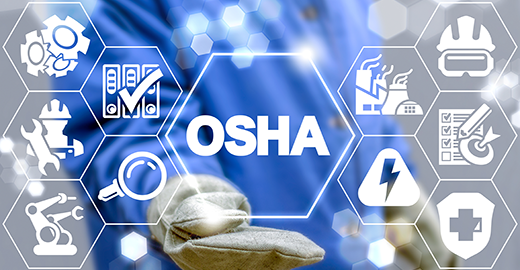
The Occupational Safety and Health Administration’s (OSHA) Hazard Communication Standard (HCS) ensures that critical information about chemical hazards is clearly and consistently communicated in the workplace. It establishes responsibility across the entire chemical supply chain from manufacturers and importers to distributors and employers to safeguard workers through informed handling and use of hazardous substances.
OSHA issued a final rule on May 20, 2024, updating the Hazard Communication Standard (HCS) to better align with the seventh revision of the United Nations’ Globally Harmonized System (GHS). The final rule largely impacts manufacturers of products like aerosols, chemicals under pressure, flammable gases, desensitized explosives, and many other chemicals. Major changes include impacts on hazard classes and classification criteria, labeling requirements, and information requirements for Safety Data Sheets (SDSs).
Fortunately, as employers and end users of hazardous chemicals, medical practices are not directly affected by the changes put in place by the final rule. Employers will not be required to make major changes to workplace labeling, employee training, or the content of the written Hazard Communication (HazCom) plan. However, to remain in compliance with current policies, employers must ensure they take steps to update the information within the practice. This includes:
Keeping up with these updates is critical for maintaining compliance with OSHA’s Hazard Communication Standard and for ensuring that employees are accurately informed about the chemical hazards they may encounter. Outdated or incorrect hazard information can jeopardize both worker safety and regulatory standing. Medical practices and their designated Safety Officers must stay informed about the changes that affect them and take proactive steps to update their programs in preparation for the July 20, 2026 compliance deadline. For questions related to OSHA compliance, please contact SVMIC’s Medical Practice Services department.
Compliance Center Update
Navigating the complex landscape of laws and regulations can be both overwhelming and costly for medical practices. That’s why SVMIC is committed to equipping our policyholders with the tools they need to stay compliant with confidence. Our popular Compliance Center offers a comprehensive suite of resources including customizable OSHA and HIPAA manuals, essential forms, practical guidance, and training materials for both Compliance Officers and staff.
Beginning in July 2025, practices and their Compliance Officers will have the ability to create and manage multiple compliance manuals directly within the platform. This enhancement streamlines workflows and enables the development of tailored manuals for each location, specialty, or other unique operational needs offering greater flexibility and precision in compliance management.
To request access to the Compliance Center, you must have an active Vantage® account and follow these steps:
If you have questions about SVMIC’s Compliance Center, please reach out to us at ContactSVMIC@svmic.com or 800-342-2239.
The contents of The Sentinel are intended for educational/informational purposes only and do not constitute legal advice. Policyholders are urged to consult with their personal attorney for legal advice, as specific legal requirements may vary from state to state and/or change over time.